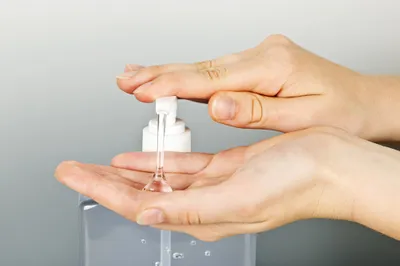Having a companion, whether it be furry, feathered or scaled is a rewarding experience. They provide companionship, can help teach children responsibility and social skills and improve our health, but it’s important to know that some animals can spread germs to people that can cause illnesses.
A zoonosis, also known as zoonotic disease refers to diseases that can be transferred from animals to humans—whether wild or domesticated. When you have close contact with a family pet, the chances of a zoonotic disease increases. Although your chances of getting a disease from a pet are small, it’s a good idea to be aware of the potential hazard. Here are a few tips to avoid spreading diseases that your pet may share with the family…
1. Choose the Right Pet
Like people, animals can carry germs while appearing perfectly healthy. Before you adopt a new family pet, consider the people living in your household. Young children under the age of 5 should not own a turtle, frog, or other reptiles. They may look harmless, but these pets commonly carry Salmonella on their outer skin.
Pregnant women should avoid handling pet rodents. These pets carry the lymphocytic choriomeningitis virus that can cause birth defects. Pregnant women are also susceptible to getting toxoplasmosis from kitty litter, so if you have a cat and are expecting, please let someone else change the litter.
2. Wash Your Hands After Touching Your Pets
Pets like cats, dogs, birds, reptiles, and rodents carry germs that can spread from animals to people. After cuddling or petting a pet, it’s recommended that you wash your hands, especially after cleaning out a cage, changing the kitty litter, or picking up after your dog. Good hygiene is vital to prevent germs from transferring.
If you can’t wash your hands with soap and water, use hand sanitizer to eliminate any germs. If you or someone in your family does get sick, make sure you tell your healthcare provider about the animals you’ve come into contact with.
3. Keep Your Family Pet Healthy
Veterinary care is as important to your pet as it is for you to visit the doctor regularly. Follow proper pet vaccinations like deworming according to yearly schedule. Control and monitor fleas and ticks, especially if your pets go outside.
Ticks can carry Lyme disease, which is caused by the bacteria Borrelia burgdorferi. It is a serious disease and can be quite serious causing a range of symptoms that affect the skin, joints and nervous systems. After taking your dog for a walk, inspect him before bringing him indoors to ensure he hasn’t picked up any ticks along the way. Fleas like to indulge in human and animal blood and they can transfer diseases between you and your pet, so take the appropriate precautions to prevent a flea outbreak in your house.
4. Prevent Rabies
Rabies is a nasty, but preventable viral disease of mammals that is often transmitted through the bite of a rabid animal—most commonly wild animals like raccoons, bats, foxes, and skunks. The virus infects the central nervous system and eventually the brain.
Get your outdoor cat and dog vaccinated for rabies by your veterinarian. Rabies is a serious disease that can kill your pet and even you if you get infected and don’t receive treatment. Symptoms of rabies include insomnia, confusion, anxiety, slight paralysis, agitation, increased saliva, difficulty swallowing, and hallucinations. The rabies vaccine is given as four doses over a 14-day period, and are given in your arm like a flu vaccine.
5. Keep Wild Animals in the Wild
You may think they’re cute and cuddly, but wild animals should not be domesticated and adopted as a family pet. Wild animals like raccoons, wild rodents, foxes, and birds can carry germs, parasites, and viruses that can be harmful to you and your pets.
Don’t encourage wild animals in your yard and avoid feeding them. If you find a young animal like a baby bunny or young bird, leave them be. Chances are its mother is close by and she’s just waiting for you to leave before she takes care of her baby.








